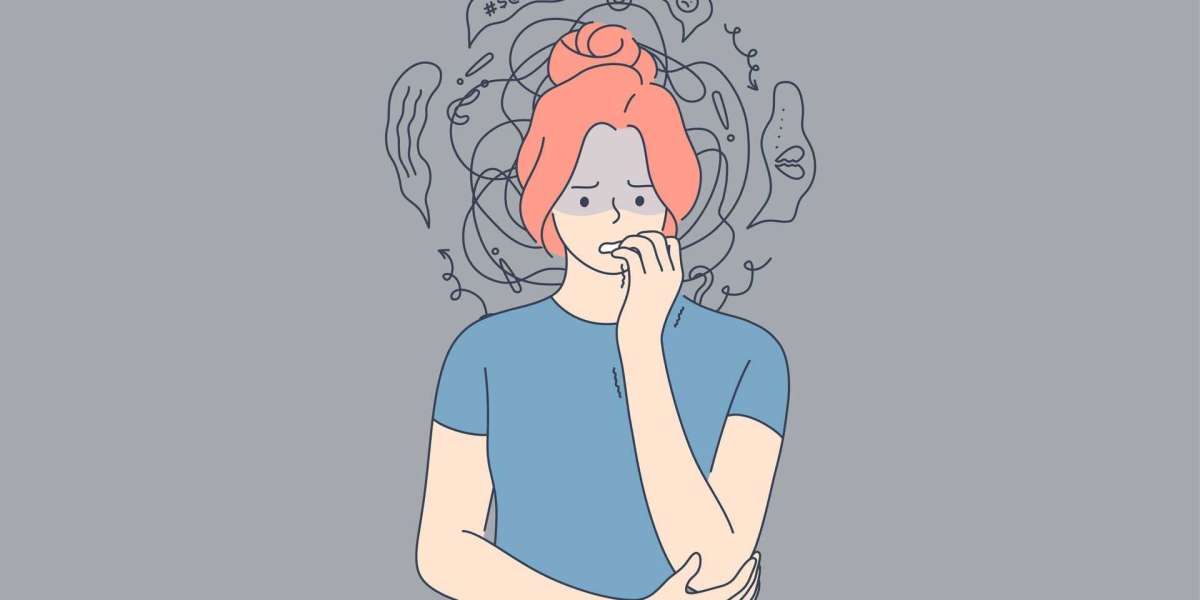Introduction:
Anxiety is a prevalent mental health condition that affects millions of people worldwide, manifesting in various forms and intensities. In this article, we delve into the intricate nature of anxious minds, exploring the underlying mechanisms, common triggers, and effective strategies for breaking the cycle of anxiety. By understanding the complexities of anxious minds and implementing proactive approaches, individuals can reclaim control over their mental well-being and live more fulfilling lives.
Understanding Anxiety:
Anxiety is more than just feeling worried or stressed; it is a complex interplay of psychological, biological, and environmental factors that can significantly impact one's daily functioning and overall quality of life. From generalized anxiety disorder (GAD) to panic disorder, social anxiety disorder, and specific phobias, anxiety manifests in various forms, each with its unique set of symptoms and triggers. Understanding the nuances of anxiety is crucial for recognizing its signs, addressing its underlying causes, and breaking free from its grip.
The Cycle of Anxiety:
Anxiety often operates in a cyclical pattern, where thoughts, emotions, behaviors, and physical sensations feed into each other, perpetuating feelings of fear and unease. It typically begins with triggering events or situations that activate the body's stress response, leading to heightened arousal and the release of stress hormones such as cortisol and adrenaline. This physiological reaction triggers anxious thoughts and emotions, which, in turn, reinforce the body's stress response, creating a vicious cycle of anxiety.
Common Triggers of Anxiety:
Anxiety can be triggered by a wide range of factors, including stressors, traumas, life transitions, and genetic predispositions. Stressful life events such as job loss, relationship problems, financial difficulties, or major life changes can exacerbate anxiety symptoms. Traumatic experiences, such as abuse, accidents, or natural disasters, can also leave a lasting impact on mental well-being, contributing to the development of anxiety disorders. Additionally, genetic factors, brain chemistry imbalances, and environmental stressors can increase susceptibility to anxiety.
Cognitive Patterns in Anxious Minds:
Anxious minds often exhibit cognitive patterns characterized by negative thinking, excessive worry, and catastrophic thinking styles. Individuals with anxiety tend to anticipate the worst-case scenarios, dwell on past mistakes, and ruminate about future uncertainties, fueling feelings of fear and apprehension. These cognitive distortions can lead to distorted perceptions of reality, magnifying threats and minimizing opportunities for growth and positive change.
Emotional Responses to Anxiety:
Emotionally, anxiety can manifest as feelings of fear, worry, nervousness, or dread, often accompanied by physical sensations such as rapid heartbeat, sweating, trembling, and muscle tension. These intense emotional responses can interfere with daily functioning, impairing one's ability to concentrate, make decisions, or engage in social interactions. Over time, chronic anxiety can lead to emotional exhaustion, burnout, and a sense of hopelessness or despair.
Behavioral Patterns in Anxious Minds:
Anxious minds may exhibit behavioral patterns characterized by avoidance behaviors, safety-seeking strategies, and compulsive rituals aimed at reducing anxiety or preventing perceived threats. Individuals with anxiety may avoid certain situations, places, or activities that trigger their anxiety symptoms, leading to social withdrawal, isolation, and decreased quality of life. They may also engage in safety behaviors such as seeking reassurance from others, avoiding risks, or engaging in repetitive rituals to alleviate their anxiety.
Breaking the Cycle of Anxiety:
Breaking free from the cycle of anxiety requires a multifaceted approach that addresses the underlying causes, cognitive patterns, emotional responses, and behavioral patterns associated with anxiety. Some effective strategies for breaking the cycle of anxiety include:
Cognitive-Behavioral Therapy (CBT):
CBT is a highly effective form of psychotherapy that helps individuals identify and challenge negative thought patterns and behaviors associated with anxiety. By replacing irrational beliefs with more adaptive and realistic ones, individuals can learn to manage their anxiety more effectively and break free from its grip.
Mindfulness and Relaxation Techniques:
Mindfulness-based interventions such as mindfulness meditation, deep breathing exercises, and progressive muscle relaxation can help individuals cultivate present-moment awareness and reduce physiological arousal associated with anxiety. These practices promote relaxation, stress reduction, and emotional well-being, providing individuals with valuable tools for managing their anxiety symptoms.
Exposure Therapy:
Exposure therapy is a behavioral therapy technique that involves gradually exposing individuals to anxiety-provoking situations or stimuli in a controlled and systematic manner. By confronting their fears in a safe and supportive environment, individuals can learn to tolerate anxiety and develop more adaptive coping strategies for managing their symptoms.
Lifestyle Modifications:
Making healthy lifestyle changes such as regular exercise, maintaining a balanced diet, getting adequate sleep, and limiting caffeine and alcohol intake can help reduce anxiety symptoms and improve overall well-being. Engaging in activities that bring joy and fulfillment, fostering supportive relationships, and setting realistic goals can also enhance resilience and buffer against the effects of anxiety.
Seeking Support:
Seeking support from friends, family members, and mental health professionals is essential for breaking the cycle of anxiety and promoting recovery. Therapy, support groups, and online communities offer opportunities for connection, validation, and guidance, providing individuals with the support they need to overcome their anxiety and live more fulfilling lives.
Conclusion:
Anxiety is a complex and multifaceted mental health condition that affects individuals of all ages and backgrounds. By understanding the underlying mechanisms, common triggers, and effective strategies for breaking the cycle of anxiety, individuals can reclaim control over their mental well-being and live more fulfilling lives. Remember, you are not alone in your struggle, and help and support are available to guide you on your journey towards greater resilience






